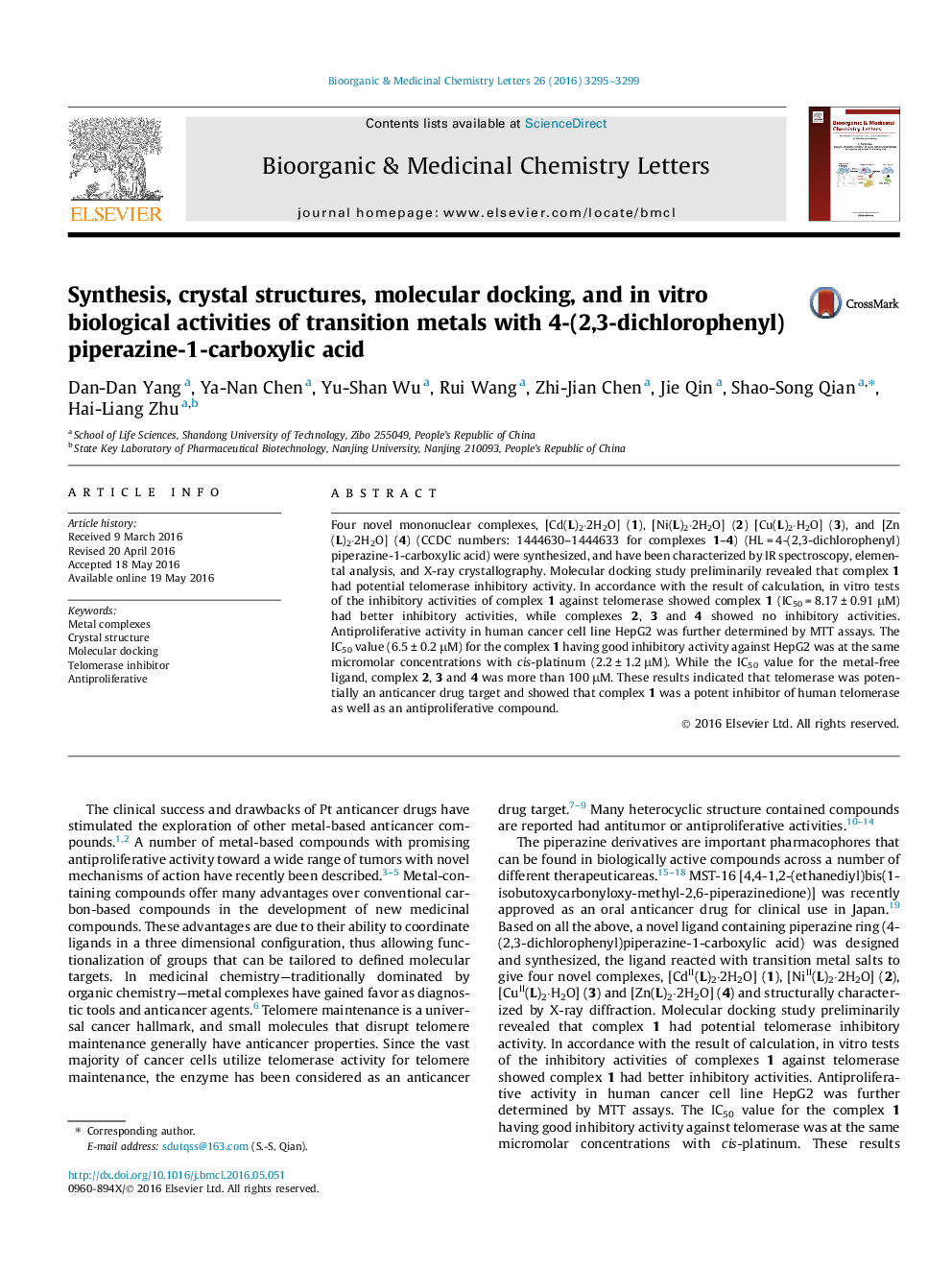| Article ID | Journal | Published Year | Pages | File Type |
|---|---|---|---|---|
| 1368693 | Bioorganic & Medicinal Chemistry Letters | 2016 | 5 Pages |
•4-(2,3-Dichlorophenyl)piperazine-1-carboxylic acid was used as a lead compound, four mononuclear complexes were synthesized.•Complexes were structurally determined by single-crystal X-ray diffraction.•Telomerase inhibitory assay was consistent with the result of calculation.•Antiproliferative activity was investigated in human cancer cell line HepG2.
Four novel mononuclear complexes, [Cd(L)2·2H2O] (1), [Ni(L)2·2H2O] (2) [Cu(L)2·H2O] (3), and [Zn(L)2·2H2O] (4) (CCDC numbers: 1444630–1444633 for complexes 1–4) (HL = 4-(2,3-dichlorophenyl)piperazine-1-carboxylic acid) were synthesized, and have been characterized by IR spectroscopy, elemental analysis, and X-ray crystallography. Molecular docking study preliminarily revealed that complex 1 had potential telomerase inhibitory activity. In accordance with the result of calculation, in vitro tests of the inhibitory activities of complex 1 against telomerase showed complex 1 (IC50 = 8.17 ± 0.91 μM) had better inhibitory activities, while complexes 2, 3 and 4 showed no inhibitory activities. Antiproliferative activity in human cancer cell line HepG2 was further determined by MTT assays. The IC50 value (6.5 ± 0.2 μM) for the complex 1 having good inhibitory activity against HepG2 was at the same micromolar concentrations with cis-platinum (2.2 ± 1.2 μM). While the IC50 value for the metal-free ligand, complex 2, 3 and 4 was more than 100 μM. These results indicated that telomerase was potentially an anticancer drug target and showed that complex 1 was a potent inhibitor of human telomerase as well as an antiproliferative compound.
Graphical abstractFigure optionsDownload full-size imageDownload as PowerPoint slide
